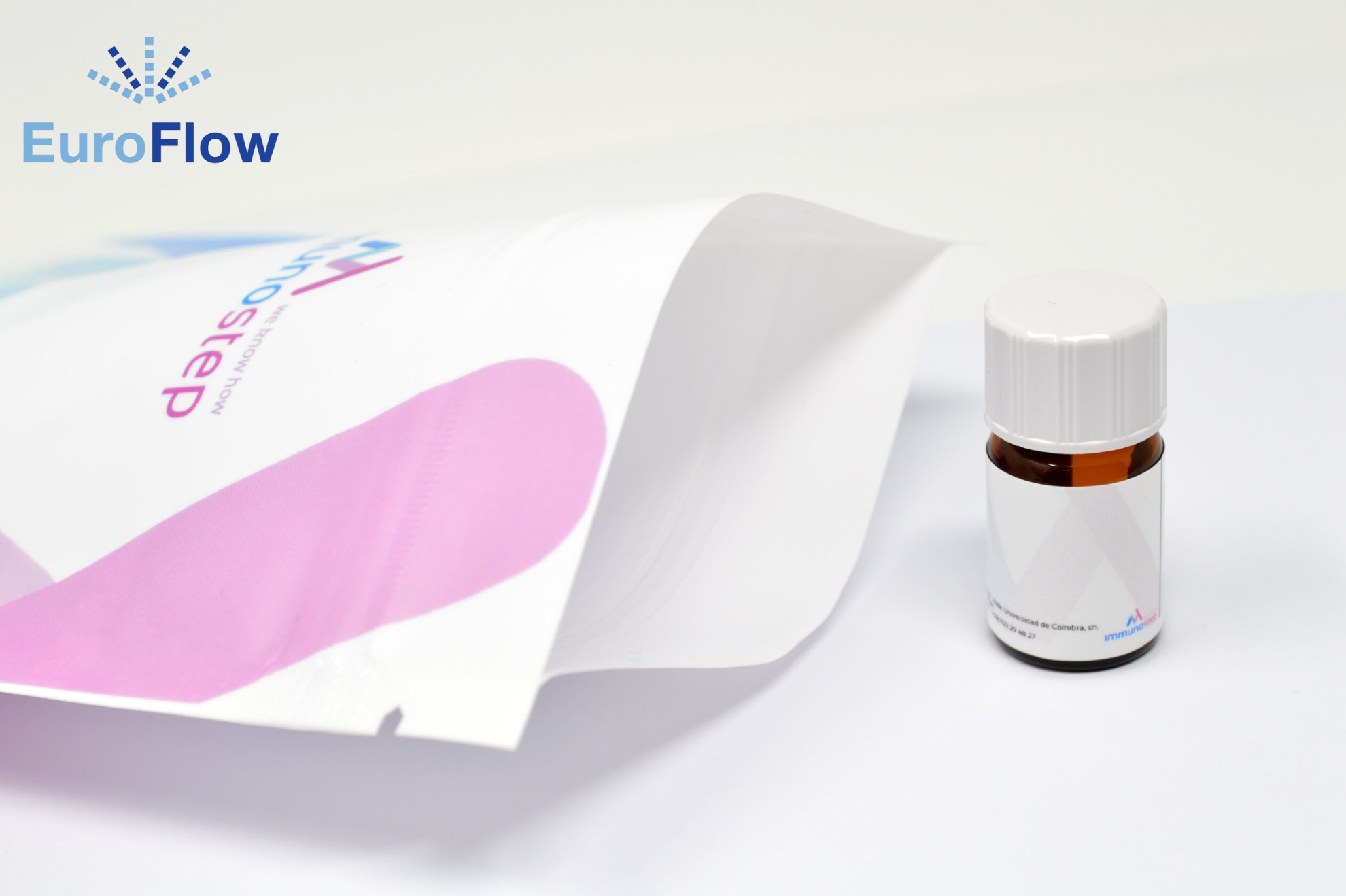- Productos
- Oncohematología
- Inmunología
- Anticuerpos
- Reactivos individuales
- Determinación de compatibilidad cruzada (FCXM)
- FcεR1
- Subclases Ig
- Reactivos individuales
- Kits
- Solicitar información
- Recursos y soporte
- Anticuerpos
- Exosomas
- Reactivos accesorios
- Software
- Tienda
- Servicios
- Síntesis de Péptidos
- Diseño
- Modificación
- Servicios de Proteínas
- Expresión y purificación
- Liofilización
- Desarrollo de anticuerpos
- Monoclonal
- Policlonal
- Servicios especializados de anticuerpos
- OEM/Producción a granel
- Purificación
- Conjugación
- Servicios de exosomas
- Aislamiento y purificación
- Caracterización
- Síntesis de Péptidos
- Soporte
- Sobre nosotros
- Contacto
- Tienda
- Single Antibodies
- CD185
CD185
608,00 € excl.VAT
CD185, a 42 kD G-protein coupled receptor with seven transmembrane regions. CXCR5 is expressed by mature B cells, follicular helper T cells, Burkitt’s lymphoma cells, and a subset of neurons. It plays a crucial role in directing cell migration to the B cell follicles within secondary lymphoid organs, which are key sites for initiating immune responses.
The ligand for the CXCR5 chemokine receptor is CXCL13 (also known as B-lymphocyte chemoattractant or BLC). CXCR5 plays an important role in the positioning and cognate interactions of B-cell chronic lymphocytic leukemia (CLL) cells with CXCL13-secreting CD68+ accessory cells within the lymphoid tissues. This interaction helps support the survival and proliferation of CLL cells in their protective microenvironment.
The high expression of CXCR5 on T follicular helper cells (T(FH)) and a subset of central memory CD4 T cells (T(CM)), suggesting that CXCR5(+) T(CM) may function similarly to T(FH) cells in supporting humoral immune responses. CXCR5(+) T(CM) exhibit B cell helper qualities, expressing high levels of CXCL13, inducing plasma cell differentiation and Ig secretion, and showing responsiveness to ICOS ligand costimulation and IL-10 secretion. These attributes are acquired through interaction with B cells, indicating a specialized role in promoting quick and efficient secondary humoral immune responses. In conclusion, CXCR5(+) T(CM) are proposed as a distinct memory cell subset specialized in supporting antibody-mediated immune responses.
Información adicional
| Conjugated | |
|---|---|
| Size | |
| Regulatory Status | |
| Clone | |
| Gene ID | |
| Format | |
| Species Reactivity | |
| Isotype | |
| Tested Applications | |
| Clonality | |
| Population | |
| Categorized | Euroflow |
| Volumen/test | |
| Almacenamiento | Store in the dark at 2-8°C. |
| Otros nombres | CXCR5, BLR1, MDR15. |
| Buffer | The reagent is provided in aqueous buffered solution containing protein stabilizer, and ≤0.09% sodium Azide (NaN3). |
| Immunogen | A mixture of U266 and XG-1 human myeloma cell lines. |
| Concentración | 0,05 mg/ml |
Uso recomendado
Immunostep’s anti-human CD185, clone J252D4, is a monoclonal antibody intended for the identification of cells expressing CXCR5 protein in peripheral blood using a compatible flow cytometer. This reagent is effective for direct immunofluorescence staining of human tissue for flow cytometric analysis using 1 test for 10^6 cells or 100 μl of sample.
Referencias
| Product description | Reference | Title | Authors | Journal | Year | |
|---|---|---|---|---|---|---|
| Product description | Reference | Title | Authors | Journal | Year |
Productos relacionados
-
CD1a
198,00 € excl.VAT – 250,00 € excl.VAT Seleccionar opciones Este producto tiene múltiples variantes. Las opciones se pueden elegir en la página de producto -
CD11c
210,00 € excl.VAT – 428,00 € excl.VAT Seleccionar opciones Este producto tiene múltiples variantes. Las opciones se pueden elegir en la página de producto -
CD117
275,00 € excl.VAT – 518,00 € excl.VAT Seleccionar opciones Este producto tiene múltiples variantes. Las opciones se pueden elegir en la página de producto -
CD20
231,00 € excl.VAT – 419,00 € excl.VAT Seleccionar opciones Este producto tiene múltiples variantes. Las opciones se pueden elegir en la página de producto
